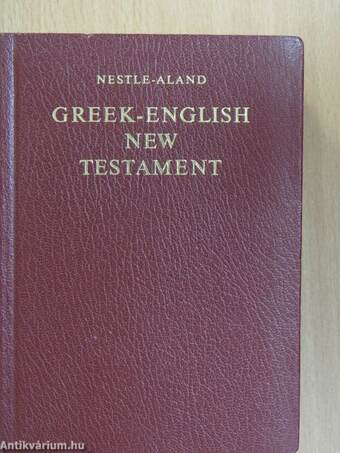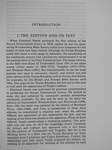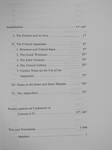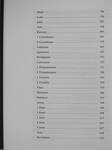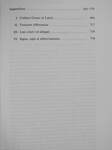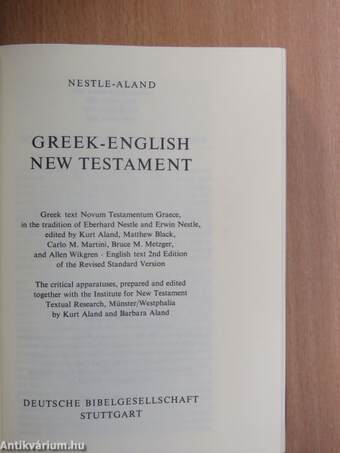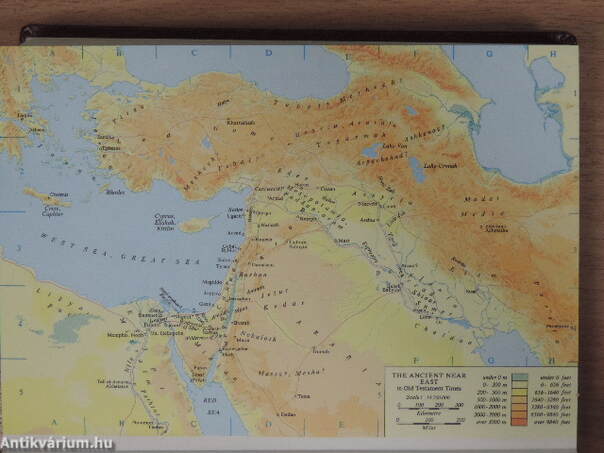1.067.327
kiadvánnyal nyújtjuk Magyarország legnagyobb antikvár könyv-kínálatát

VISSZA
A TETEJÉRE
JAVASLATOKÉszre-
vételek
Greek-English New Testament
| Kiadó: | Deutsche Bibelgesellschaft |
|---|---|
| Kiadás helye: | Stuttgart |
| Kiadás éve: | |
| Kötés típusa: | Fűzött keménykötés |
| Oldalszám: | 779 oldal |
| Sorozatcím: | |
| Kötetszám: | |
| Nyelv: | Görög Angol |
| Méret: | 16 cm x 12 cm |
| ISBN: | 3-438-05408-6 |
| Megjegyzés: | Néhány színes térképpel illusztrálva. |
naponta értesítjük a beérkező friss
kiadványokról
naponta értesítjük a beérkező friss
kiadványokról
Fülszöveg
INTRODUCTION
I. THE EDITION AND ITS TEXT
When Eberhard Nestle produced the first edition of the Nóvum Testamentum Graece in 1898, neither he nor the sponsoring Württemberg Bible Society could have imagined the full extent of what had been started. Although the Textus Receptus could stili claim a wide range of defenders, the scholarship of the nineteenth Century had conclusively demonstrated it to be the poorest form of the New Testament text. The major éditions in the field were those of Tischendorf (from 1841 to the editio octava critica maior of 1869-1872), Tregelles (1857-1872), and Westcott-Hort (1881). But internationally by far the most popular text used in university, church, and scnool was still some edition of the Textus Receptus such as the one distributed, for example, by the British and Foreign Bible Society until 1904. The reign of the Textus Receptus did not end in this area as well until the appearance of Nestle's édition.
Eberhard Nestle was motivated by... Tovább
Fülszöveg
INTRODUCTION
I. THE EDITION AND ITS TEXT
When Eberhard Nestle produced the first edition of the Nóvum Testamentum Graece in 1898, neither he nor the sponsoring Württemberg Bible Society could have imagined the full extent of what had been started. Although the Textus Receptus could stili claim a wide range of defenders, the scholarship of the nineteenth Century had conclusively demonstrated it to be the poorest form of the New Testament text. The major éditions in the field were those of Tischendorf (from 1841 to the editio octava critica maior of 1869-1872), Tregelles (1857-1872), and Westcott-Hort (1881). But internationally by far the most popular text used in university, church, and scnool was still some edition of the Textus Receptus such as the one distributed, for example, by the British and Foreign Bible Society until 1904. The reign of the Textus Receptus did not end in this area as well until the appearance of Nestle's édition.
Eberhard Nestle was motivated by practical considérations in producing his Nóvum Testamentum Graece. He wished to make the text achieved by nineteenth Century scholarship commonly available. To this end he took as his basis the éditions of Tischendorf, Westcott-Hort, and Weymouth (1886, from 1901 the latter was replaced by the edition of Bernhard Weiss, 1894-1900), and from a comparison of these three éditions he constructed a majority text: when the éditions differed, the agreement of two determined the text, and the reading of the third was placed in the apparatus. When all three differed, Nestle would adopt a mediating solution. This principie was not new. In 1873 the Cambridge Greek Testament for Schools and Colleges had appeared with a text based on the éditions of Tischendorf and Tregelles. But for it the deciding factor in a draw was the Textus Receptus (or when necessary even Lachmann and Codex Sinaiticus). Further, the meticulous care with which Nestle prepared his edition, re-cording in its apparatus the readings of the éditions he used Vissza
Témakörök
Megvásárolható példányok
Nincs megvásárolható példány
A könyv összes megrendelhető példánya elfogyott. Ha kívánja, előjegyezheti a könyvet, és amint a könyv egy újabb példánya elérhető lesz, értesítjük.



